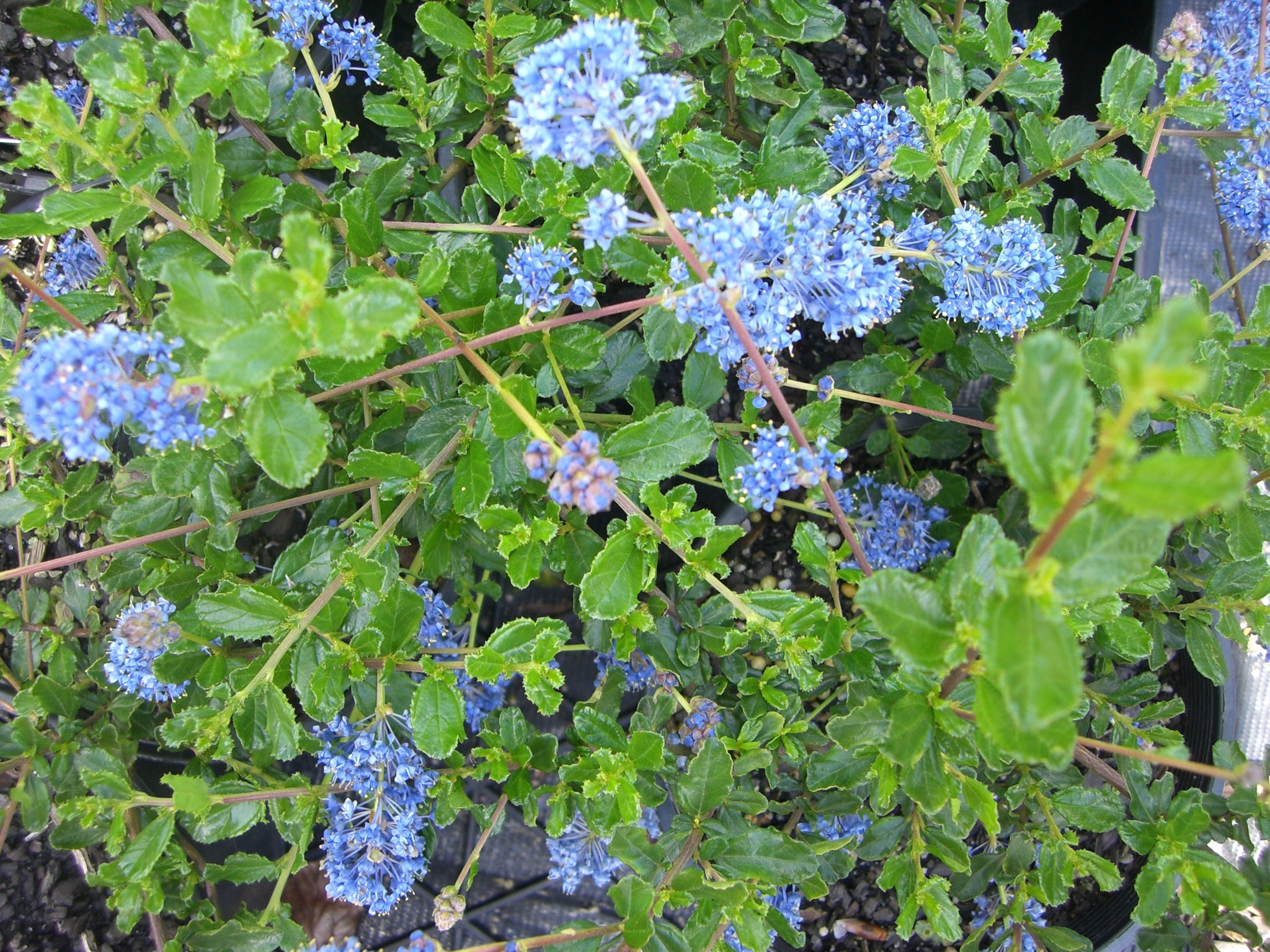
Greek keanothus — classical name for spiny plants.
Deciduous and evergreen shrubs and small trees, sometimes spiny. Leaves variable, opposite or alternate, mostly toothed and with 3 prominent nerves arising from the base or veins pinnate. Flowers in terminal or lateral clusters, small, mostly blue but occasionally white to pink or violet. Sepals 5, united at the base. Petals 5, hooded, free. Stamens 5, opposite the petals. Ovary surrounded by a glandular disk. Fruit a 3- lobed capsule.
Grown for the range of pale to vivid blue flowers. Species hybridise readily in cultivation and deliberate crosses have produced some spectacular garden hybrids.
The introduction of many hybrids of uncertain parentage makes a key impractical.
About 55 species, most from W North America.
Cultivars by cuttings, species by cuttings and seed.
Leaves, fresh or dried, are used by American Indians as a tea and for other medicinal purposes.
Shrubs often with spectacular blue flowers, sometimes also with glossy leaves.
Gardiner (1997).
Source: (2002). Rhamnaceae. In: . Horticultural Flora of South-eastern Australia. Volume 3. Flowering plants. Dicotyledons. Part 2. The identification of garden and cultivated plants. University of New South Wales Press.

Cultivars of uncertain parentage
Compact, arching shrub to nearly 1 m tall and 1 m wide. Flowers mid-blue.
Upright shrub 2-3 m tall with glossy, dark leaves to about 7 cm long. Flowers prolific, deep blue; spring to early summer (C. griseus × ?C. papillosus).
Spreading shrub to about 1.5 m tall. Leaves to 2.5 cm long. Flowers clear blue in spikes generally more than 10 cm long.
Densely branched shrub with small leaves. Flowers deep indigo in clusters to 2.5 cm long; spring.
Shrub to about 0.5 m tall and spreading to about 3 m wide. Flowers exceptionally prolific, bright clear blue.a cultivar of C. griseus var. horizontalis.